Lemon Caper Sauce: Prepare to elevate your culinary creations with this vibrant and versatile sauce! Imagine a burst of sunshine dancing on your palate, a symphony of tangy lemon, salty capers, and rich butter, all harmonizing to create an unforgettable flavor experience. This isn’t just a sauce; it’s a culinary secret weapon that can transform ordinary dishes into extraordinary meals.
While its exact origins are debated, the essence of Lemon Caper Sauce can be traced back to classic Mediterranean cooking, where lemons and capers have long been cherished ingredients. Capers, the unopened flower buds of the caper bush, have been enjoyed for centuries, adding a distinctive briny and slightly floral note to dishes. The bright acidity of lemon, a staple in Mediterranean cuisine, perfectly complements the capers, creating a balanced and refreshing flavor profile.
People adore this sauce for its incredible versatility and ease of preparation. It’s quick enough for a weeknight dinner yet elegant enough to grace a special occasion. The bright, zesty flavor cuts through richness beautifully, making it a perfect accompaniment to fish, chicken, pasta, or even vegetables. The delightful combination of tangy, salty, and buttery notes creates a truly addictive taste that will have you coming back for more. Plus, who can resist a sauce that adds a touch of sophistication with minimal effort? Let’s dive in and discover how to make this magical sauce!
Ingredients:
- 1/2 cup (1 stick) unsalted butter
- 2 tablespoons olive oil
- 4 cloves garlic, minced
- 1/4 cup dry white wine (such as Sauvignon Blanc or Pinot Grigio)
- 1/4 cup fresh lemon juice
- 2 tablespoons capers, drained
- 2 tablespoons chopped fresh parsley
- 1 tablespoon lemon zest
- 1/2 teaspoon red pepper flakes (optional)
- Salt and freshly ground black pepper to taste
Preparing the Lemon Caper Sauce:
- Melt the Butter and Olive Oil: In a medium saucepan over medium heat, melt the butter along with the olive oil. The olive oil helps to prevent the butter from burning and adds a nice depth of flavor to the sauce. Make sure the butter is fully melted before moving on to the next step.
- Sauté the Garlic: Add the minced garlic to the melted butter and olive oil. Sauté for about 1-2 minutes, or until the garlic is fragrant and lightly golden. Be careful not to burn the garlic, as this will make the sauce bitter. Keep a close eye on it and stir frequently. The aroma should be inviting and not acrid.
- Deglaze with White Wine: Pour in the dry white wine. This will deglaze the pan, lifting up any browned bits from the bottom, which adds a lot of flavor to the sauce. Let the wine simmer for about 2-3 minutes, or until it has reduced slightly. This allows the alcohol to evaporate and concentrates the flavor of the wine. You should see the liquid level decrease a bit.
- Add Lemon Juice and Capers: Stir in the fresh lemon juice and drained capers. The lemon juice adds a bright, tangy flavor, while the capers provide a salty, briny counterpoint. Bring the mixture to a simmer and let it cook for another 2-3 minutes, allowing the flavors to meld together. The sauce should thicken slightly.
- Incorporate Parsley and Lemon Zest: Remove the saucepan from the heat and stir in the chopped fresh parsley and lemon zest. The parsley adds a fresh, herbaceous note, while the lemon zest intensifies the lemon flavor and adds a pleasant aroma. Make sure the parsley is finely chopped for even distribution in the sauce.
- Season to Taste: Season the sauce with salt and freshly ground black pepper to taste. Be careful with the salt, as the capers are already quite salty. Start with a small amount and add more as needed. If you like a little heat, you can also add a pinch of red pepper flakes at this stage. Taste the sauce and adjust the seasonings until you are happy with the flavor.
Tips and Variations:
- Use Fresh Ingredients: For the best flavor, use fresh lemon juice, parsley, and garlic. Bottled lemon juice and dried herbs just don’t compare to the real thing.
- Adjust the Lemon: If you prefer a more tart sauce, you can add a little more lemon juice. If you prefer a milder sauce, you can reduce the amount of lemon juice.
- Add More Capers: If you love capers, feel free to add more than the recipe calls for.
- Make it Spicy: For a spicier sauce, add more red pepper flakes or a pinch of cayenne pepper.
- Add Shallots: For a more complex flavor, you can sauté finely chopped shallots along with the garlic.
- Use Different Herbs: You can substitute other fresh herbs for the parsley, such as dill, chives, or oregano.
- Make it Creamy: For a creamier sauce, you can stir in a tablespoon or two of heavy cream or crème fraîche at the end.
- Add Chicken Broth: For a richer sauce, you can add a splash of chicken broth along with the white wine.
- Make it Vegan: Substitute the butter with vegan butter or olive oil.
Serving Suggestions:
This Lemon Caper Sauce is incredibly versatile and can be used in a variety of dishes. Here are a few serving suggestions:
- Over Fish: This sauce is a classic pairing for fish, such as salmon, cod, halibut, or tilapia. Simply pan-fry, bake, or grill the fish and then drizzle the sauce over the top.
- Over Chicken: It’s also delicious over chicken breasts or thighs. You can pan-fry, bake, or grill the chicken and then top it with the sauce.
- Over Pasta: Toss the sauce with your favorite pasta, such as spaghetti, linguine, or fettuccine. Add some cooked shrimp or chicken for a more substantial meal.
- Over Vegetables: Drizzle the sauce over steamed or roasted vegetables, such as asparagus, broccoli, or green beans.
- As a Dip: Serve the sauce as a dip for artichoke hearts or grilled vegetables.
- With Eggs: Spoon the sauce over poached or fried eggs for a flavorful breakfast or brunch.
Make Ahead and Storage:
This Lemon Caper Sauce can be made ahead of time and stored in the refrigerator for up to 3 days. To reheat, gently warm the sauce in a saucepan over low heat, stirring occasionally. You may need to add a splash of water or broth if the sauce has thickened too much.
The sauce can also be frozen for up to 1 month. Thaw it in the refrigerator overnight before reheating.
Detailed Step-by-Step Instructions with Explanations:
- Prepare Your Ingredients: Before you start cooking, it’s always a good idea to have all of your ingredients prepped and ready to go. This is called “mise en place” and it makes the cooking process much smoother and more efficient. Measure out the butter, olive oil, white wine, lemon juice, and capers. Mince the garlic, chop the parsley, and zest the lemon. Having everything ready will prevent you from scrambling around while you’re cooking and potentially burning something.
- Melt the Butter and Olive Oil (Detailed): Use a medium-sized saucepan, preferably one with a light-colored bottom so you can easily see how the butter is browning. Place the saucepan over medium heat. Add the butter and olive oil to the pan. The olive oil helps to prevent the butter from burning, as butter has a lower smoke point. Watch the butter carefully as it melts. It will first foam up, then the foam will subside. You want the butter to be fully melted and shimmering, but not browned. If the butter starts to brown too quickly, reduce the heat to low.
- Sauté the Garlic (Detailed): Once the butter and olive oil are melted, add the minced garlic to the pan. Stir the garlic constantly with a wooden spoon or spatula to prevent it from burning. Garlic burns very easily, and burnt garlic will make the entire sauce taste bitter. Sauté the garlic for about 1-2 minutes, or until it is fragrant and lightly golden. You should be able to smell the garlic as it cooks. The garlic should be soft and translucent, but not brown or crispy. If the garlic starts to brown too quickly, remove the pan from the heat for a few seconds to cool it down.
- Deglaze with White Wine (Detailed): Pour the dry white wine into the pan. The wine will immediately start to bubble and sizzle as it hits the hot pan. Use a wooden spoon or spatula to scrape up any browned bits from the bottom of the pan. These browned bits are called “fond” and they are packed with flavor. The wine will help to dissolve the fond and incorporate it into the sauce. Let the wine simmer for about 2-3 minutes, or until it has reduced slightly. This allows the alcohol to evaporate and concentrates the flavor of the wine. You should see the liquid level decrease by about half. The wine will also thicken slightly.
- Add Lemon Juice and Capers (Detailed): Stir in the fresh lemon juice and drained capers. The lemon juice adds a bright, tangy flavor, while the capers provide a salty, briny counterpoint. Make sure the capers are well-drained before adding them to the sauce, as you don’t want to add any excess liquid. Bring the mixture to a simmer and let it cook for another 2-3 minutes, allowing the flavors to meld together. The sauce should thicken slightly. You can adjust the amount of lemon juice and capers to your liking. If you prefer a more tart sauce, add more lemon juice. If you prefer a saltier sauce, add more capers.
- Incorporate Parsley and Lemon Zest (Detailed): Remove the saucepan from the heat and stir in the chopped fresh parsley and lemon zest. The parsley adds a fresh, herbaceous note, while the lemon zest intensifies the lemon flavor and adds a pleasant aroma. It’s important to add the parsley and lemon zest off the heat, as the heat can destroy their delicate flavors. Make sure the parsley is finely chopped for even distribution in the sauce. Use a microplane or
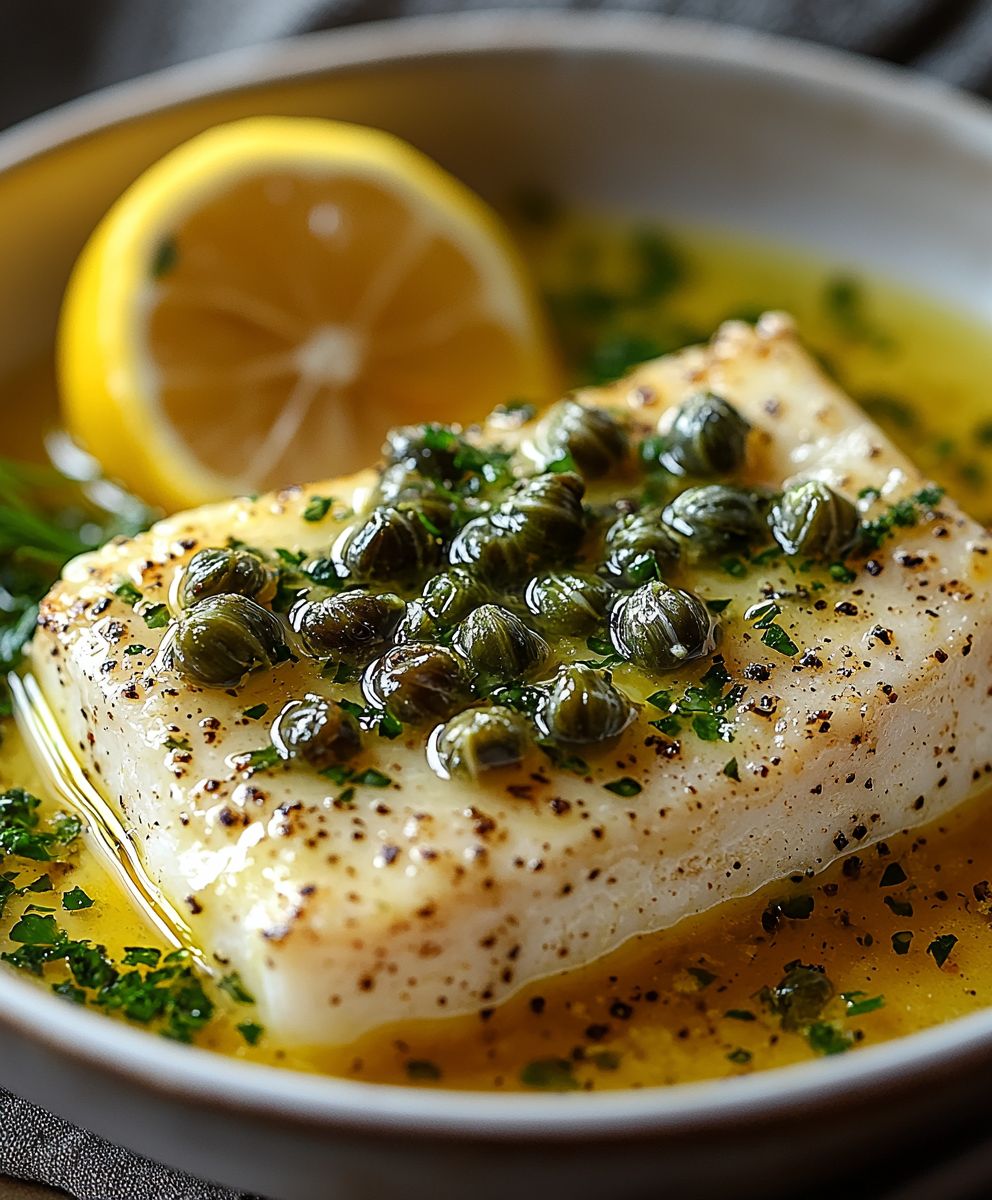
Conclusion:
This Lemon Caper Sauce isn’t just another sauce; it’s a flavor explosion waiting to happen! I truly believe this recipe is a must-try because it’s incredibly versatile, quick to make, and elevates even the simplest dishes to gourmet status. The bright, zesty lemon perfectly complements the briny capers, creating a symphony of flavors that will tantalize your taste buds. Forget bland, boring meals – this sauce is your secret weapon to adding a burst of sunshine to your cooking.
Think of it drizzled over pan-seared salmon, transforming it into a restaurant-worthy masterpiece. Or imagine it tossed with perfectly cooked pasta, creating a light and refreshing lunch. But the possibilities don’t stop there! This sauce is equally delicious with grilled chicken, roasted vegetables, or even as a vibrant dipping sauce for artichokes. Seriously, once you try it, you’ll find yourself reaching for it again and again.
Serving Suggestions and Variations:
For a richer, creamier sauce, try whisking in a tablespoon or two of heavy cream or crème fraîche at the end. This adds a luxurious touch that’s perfect for special occasions. If you’re feeling adventurous, add a pinch of red pepper flakes for a subtle kick of heat. A sprinkle of fresh parsley or dill adds a lovely herbaceous note. And for a vegan option, simply substitute the butter with a high-quality olive oil. You can also experiment with different types of capers – non-pareil capers are smaller and more delicate, while larger capers offer a bolder, more intense flavor.
Another fantastic variation is to add a clove of minced garlic to the butter while it’s melting. This infuses the sauce with a delicious garlic aroma and flavor. You could also try adding a squeeze of orange juice along with the lemon juice for a slightly sweeter and more complex flavor profile. Don’t be afraid to get creative and experiment with different herbs and spices to create your own signature version of this amazing sauce.
I’ve personally used this Lemon Caper Sauce on everything from simple weeknight dinners to elegant dinner parties, and it’s always a hit. It’s the kind of recipe that makes you feel like a culinary genius, even if you’re just throwing it together in minutes. The best part is that it’s so easy to customize to your own taste preferences.
So, what are you waiting for? Grab your ingredients and give this recipe a try! I promise you won’t be disappointed. It’s a guaranteed crowd-pleaser that will quickly become a staple in your kitchen.
I’m so excited for you to experience the magic of this Lemon Caper Sauce. Once you’ve made it, I’d love to hear about your experience! Share your photos and comments below – tell me what you served it with, what variations you tried, and how much you loved it! Your feedback is invaluable, and I can’t wait to see what culinary creations you come up with. Happy cooking!
Lemon Caper Sauce: The Ultimate Guide to Making It Perfectly
Bright, flavorful Lemon Caper Sauce perfect for fish, chicken, pasta, or vegetables. Easy to make with a tangy lemon base, salty capers, and fresh herbs.
Ingredients
- ½ cup (1 stick) unsalted butter
- 2 tablespoons olive oil
- 4 cloves garlic, minced
- ¼ cup dry white wine (such as Sauvignon Blanc or Pinot Grigio)
- ¼ cup fresh lemon juice
- 2 tablespoons capers, drained
- 2 tablespoons chopped fresh parsley
- 1 tablespoon lemon zest
- ½ teaspoon red pepper flakes (optional)
- Salt and freshly ground black pepper to taste
Instructions
- Melt the Butter and Olive Oil: In a medium saucepan over medium heat, melt the butter along with the olive oil.
- Sauté the Garlic: Add the minced garlic to the melted butter and olive oil. Sauté for about 1-2 minutes, or until the garlic is fragrant and lightly golden. Be careful not to burn the garlic.
- Deglaze with White Wine: Pour in the dry white wine. Let the wine simmer for about 2-3 minutes, or until it has reduced slightly.
- Add Lemon Juice and Capers: Stir in the fresh lemon juice and drained capers. Bring the mixture to a simmer and let it cook for another 2-3 minutes, allowing the flavors to meld together.
- Incorporate Parsley and Lemon Zest: Remove the saucepan from the heat and stir in the chopped fresh parsley and lemon zest.
- Season to Taste: Season the sauce with salt and freshly ground black pepper to taste. Add red pepper flakes if desired.
Notes
- For the best flavor, use fresh lemon juice, parsley, and garlic.
- Adjust the lemon juice and capers to your preference.
- For a spicier sauce, add more red pepper flakes or a pinch of cayenne pepper.
- For a more complex flavor, you can sauté finely chopped shallots along with the garlic.
- You can substitute other fresh herbs for the parsley, such as dill, chives, or oregano.
- For a creamier sauce, you can stir in a tablespoon or two of heavy cream or crème fraîche at the end.
- For a richer sauce, you can add a splash of chicken broth along with the white wine.
- Substitute the butter with vegan butter or olive oil to make it vegan.
- This sauce can be made ahead of time and stored in the refrigerator for up to 3 days. To reheat, gently warm the sauce in a saucepan over low heat, stirring occasionally.
- The sauce can also be frozen for up to 1 month. Thaw it in the refrigerator overnight before reheating.

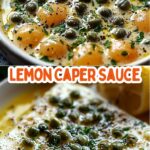
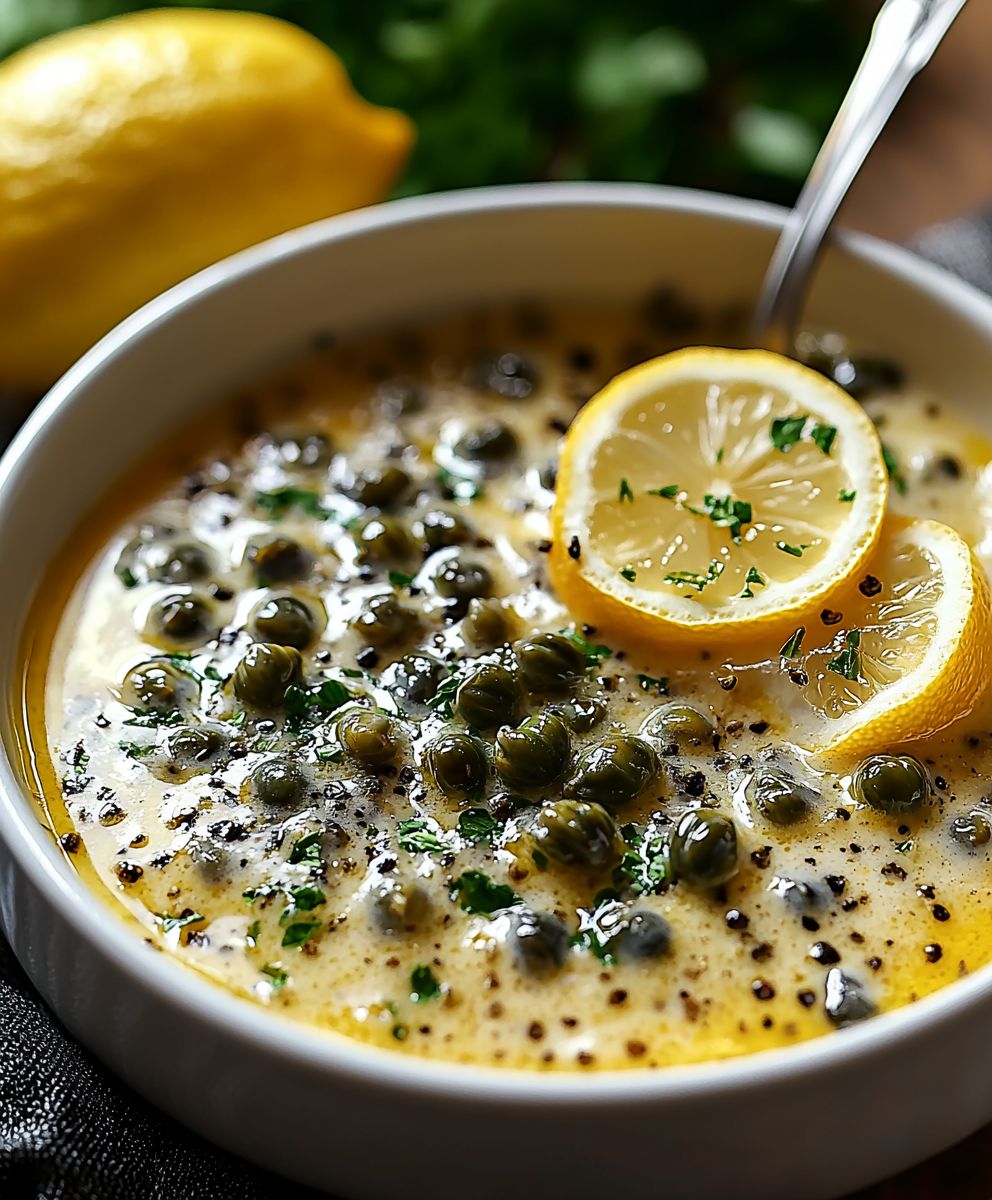
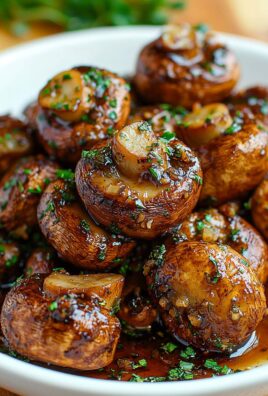

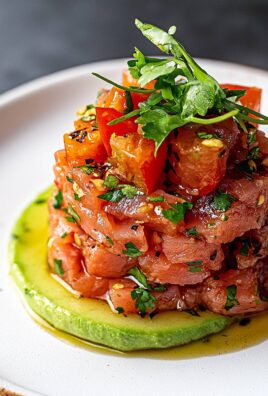
Leave a Comment